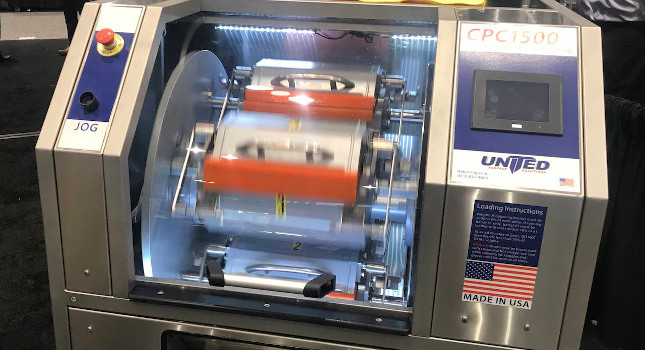Researchers have utilized two-dimensional hybrid metal halides in a device that allows directional control of terahertz radiation, which could improve electronic devices.

Researchers have utilized two-dimensional hybrid metal halides in a device that allows directional control of terahertz radiation generated by a spintronic scheme. The device has better signal efficiency than conventional terahertz generators, and is thinner, lighter and less expensive to produce.
Terahertz (THz) refers to the part of the electromagnetic spectrum (i.e., frequencies between 100 GHz and 10 THz) between microwave and optical, and THz technologies have shown promise for applications ranging from faster computing and communications to sensitive detection equipment. However, creating reliable THz devices has been challenging due to their size, cost and energy conversion inefficiency.
“Ideally, THz devices of the future should be lightweight, low-cost and robust, but that has been difficult to achieve with current materials,” said Dali Sun, assistant professor of physics at North Carolina State University and co-corresponding author of the work. “In this work, we found that a 2D hybrid metal halide commonly used in solar cells and diodes, in conjunction with spintronics, may meet several of these requirements.”
The 2D hybrid metal halide in question is a popular and commercially available synthetic hybrid semiconductor: butyl ammonium lead iodine. Spintronics refers to controlling the spin of an electron, rather than just using its charge, in order to create energy.
Sun and colleagues from Argonne National Laboratories, the University of North Carolina at Chapel Hill and Oakland University created a device that layered the 2D hybrid metal halides with a ferromagnetic metal, then excited it with a laser, creating an ultrafast spin current that in turn generated THz radiation.
The team found that not only did the 2D hybrid metal halide device outperform larger, heavier and more expensive to produce THz emitters currently in use, they also found that the 2D hybrid metal halide’s properties allowed them to control the direction of the THz transmission.
“Traditional terahertz transmitters were based upon ultrafast photocurrent,” Sun said. “But spintronic-generated emissions produce a wider bandwidth of THz frequency, and the direction of the THz emission can be controlled by modifying the speed of the laser pulse and the direction of the magnetic field, which in turn affects the interaction of magnons, photons, and spins and allows us directional control.”
Sun believes this work could be a first step in exploring 2D hybrid metal halide materials generally as potentially useful in other spintronic applications.
“The 2D hybrid metal halide-based device used here is smaller and more economical to produce, is robust and works well at higher temperatures,” Sun said. “This suggests that 2D hybrid metal halide materials may prove superior to the current conventional semiconductor materials for THz applications, which require sophisticated deposition approaches that are more susceptible to defects. We hope that our research will launch a promising testbed for designing a wide variety of low-dimensional hybrid metal halide materials for future solution-based spintronic and spin-optoelectronic applications.”
– Edited by Chris Vavra, web content manager, Control Engineering, CFE Media and Technology, [email protected].

